Masaki Hayashi
Retrieving and Highlighting Action with Spatiotemporal Reference
May 19, 2020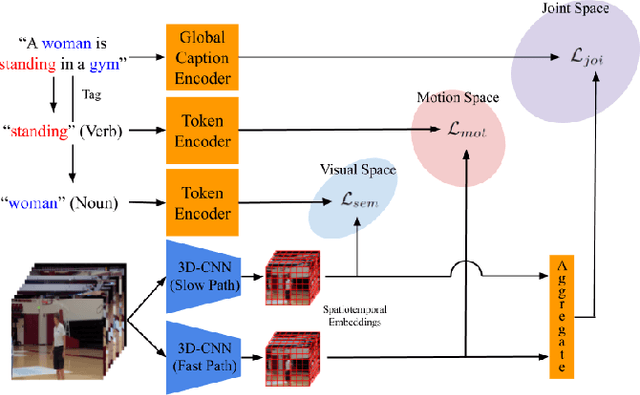
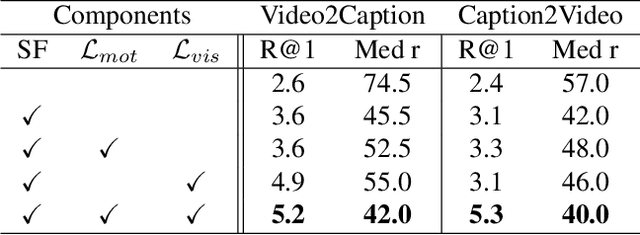
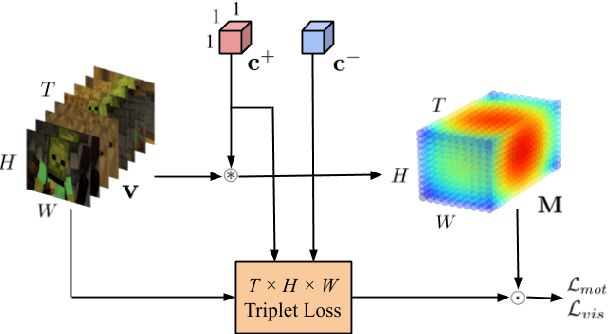
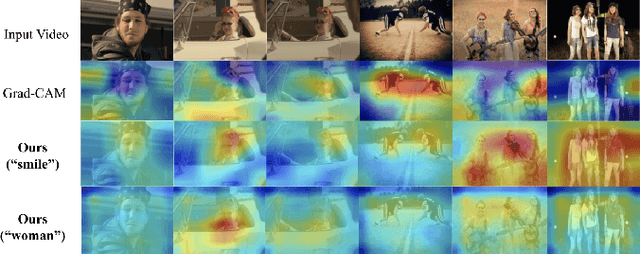
Abstract:In this paper, we present a framework that jointly retrieves and spatiotemporally highlights actions in videos by enhancing current deep cross-modal retrieval methods. Our work takes on the novel task of action highlighting, which visualizes where and when actions occur in an untrimmed video setting. Action highlighting is a fine-grained task, compared to conventional action recognition tasks which focus on classification or window-based localization. Leveraging weak supervision from annotated captions, our framework acquires spatiotemporal relevance maps and generates local embeddings which relate to the nouns and verbs in captions. Through experiments, we show that our model generates various maps conditioned on different actions, in which conventional visual reasoning methods only go as far as to show a single deterministic saliency map. Also, our model improves retrieval recall over our baseline without alignment by 2-3% on the MSR-VTT dataset.
Dominant Codewords Selection with Topic Model for Action Recognition
May 01, 2016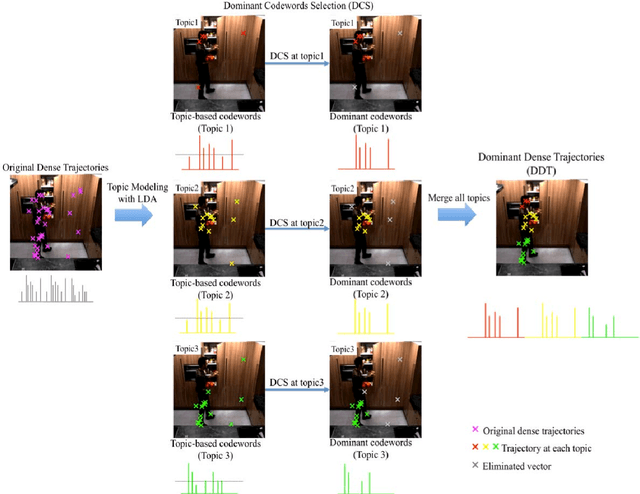

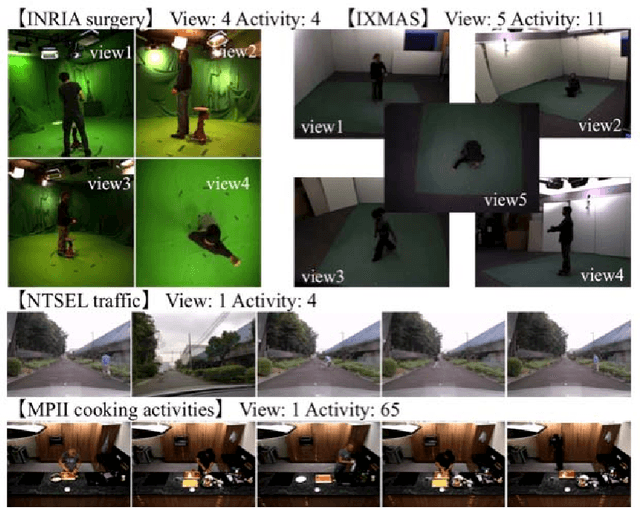
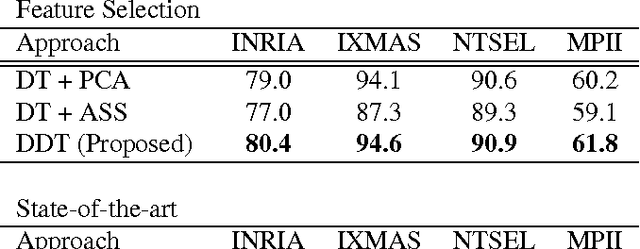
Abstract:In this paper, we propose a framework for recognizing human activities that uses only in-topic dominant codewords and a mixture of intertopic vectors. Latent Dirichlet allocation (LDA) is used to develop approximations of human motion primitives; these are mid-level representations, and they adaptively integrate dominant vectors when classifying human activities. In LDA topic modeling, action videos (documents) are represented by a bag-of-words (input from a dictionary), and these are based on improved dense trajectories. The output topics correspond to human motion primitives, such as finger moving or subtle leg motion. We eliminate the impurities, such as missed tracking or changing light conditions, in each motion primitive. The assembled vector of motion primitives is an improved representation of the action. We demonstrate our method on four different datasets.
 Add to Chrome
Add to Chrome Add to Firefox
Add to Firefox Add to Edge
Add to Edge